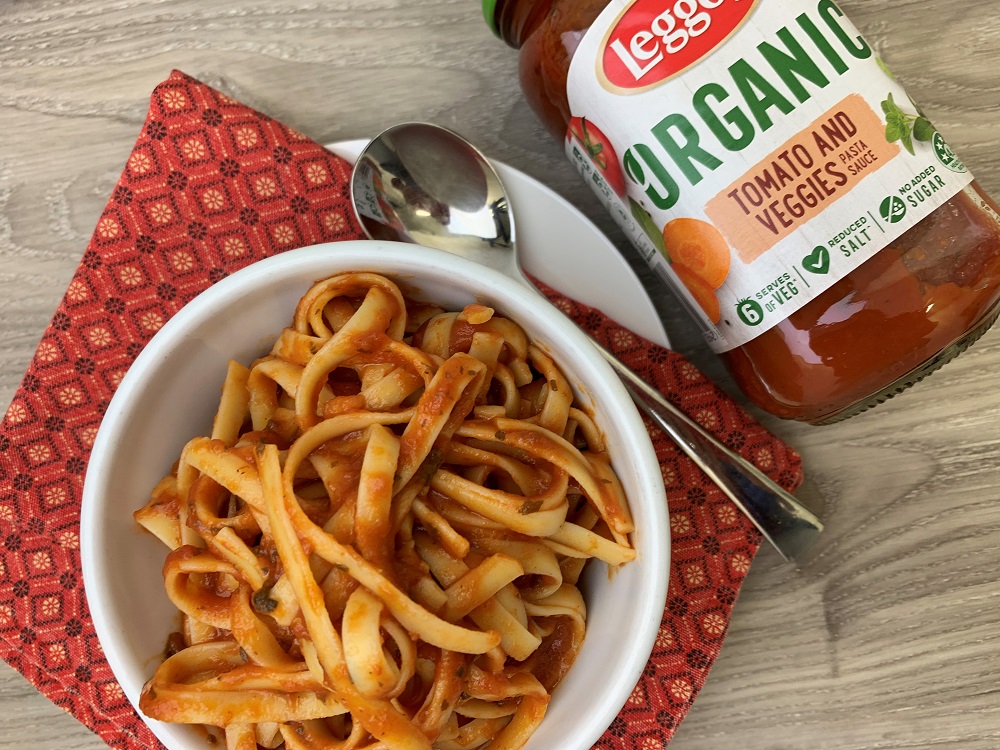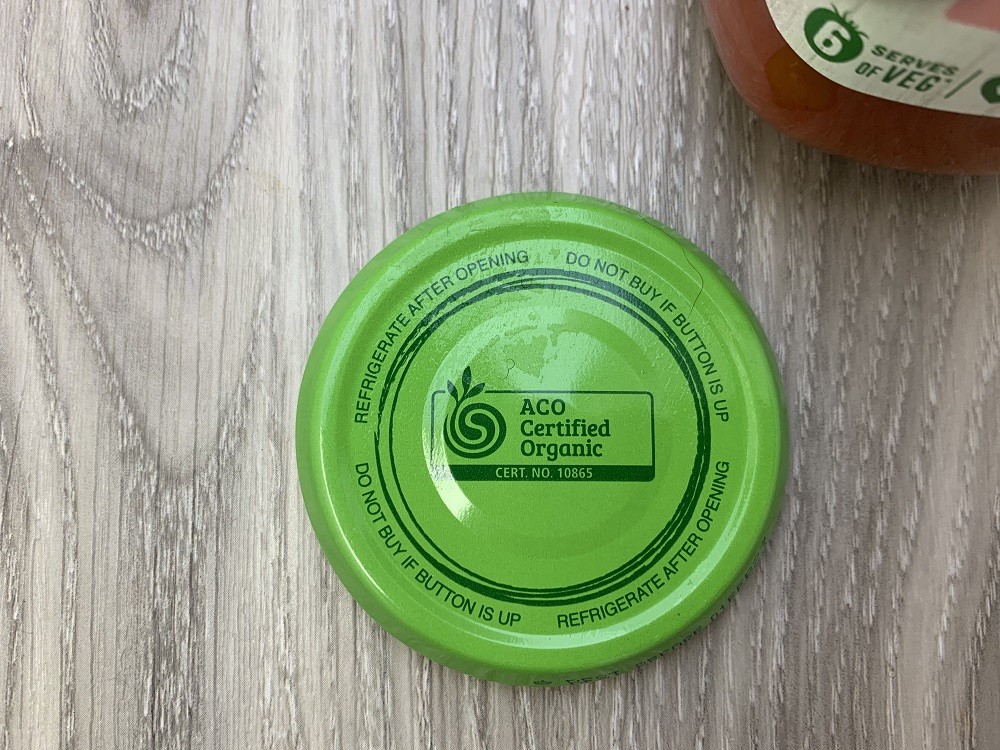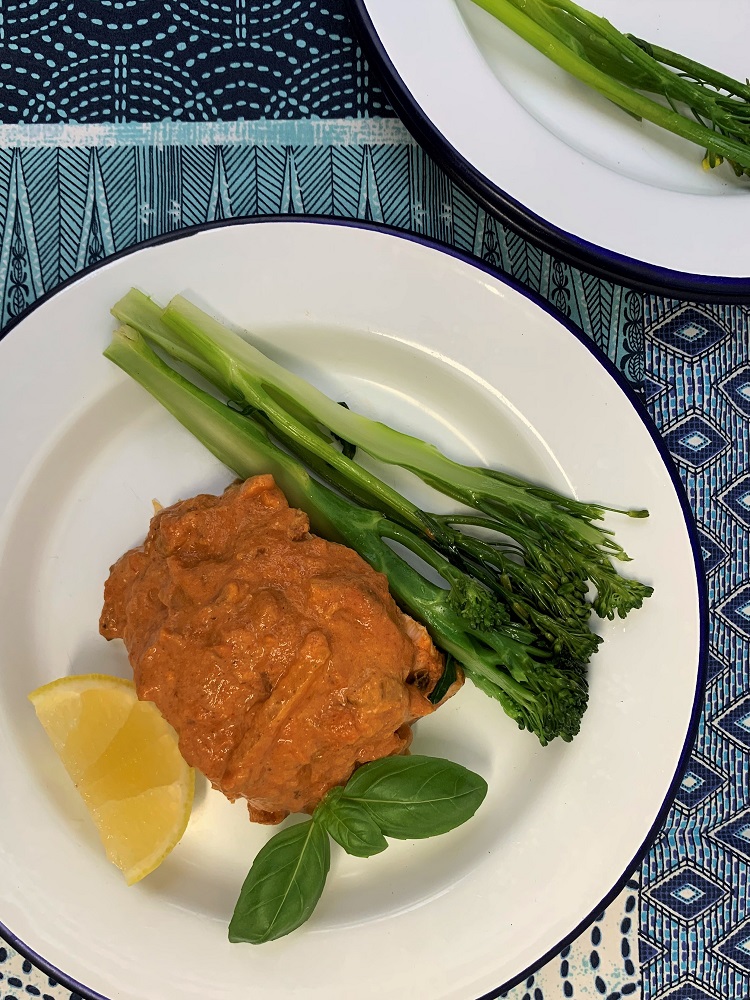Product review: Leggo’s Organic Sauces
Written by Catherine Saxelby
on Wednesday, 19 May 2021.
Tagged: health, Health Star Rating, healthy eating, healthy lifestyle, low salt, nutrition, organic, review, vegan, vegetables

These new organic pasta sauces from Leggo’s come in three varieties – Organic Tomato and Basil, Organic Tomato and Garlic, and Organic Tomato and Veggies. All of them sport an impressive 4.5 Health Star Rating (HSR). Read on to see how they fared in my taste tests and under the nutrition microscope.
 This post has been sponsored by Leggo’s.
This post has been sponsored by Leggo’s.
The claims
I bought a jar each of the three varieties of the Leggo’s Organic Pasta Sauces and noticed they all claimed the same thing:
- 6 Serves of vegetables in every 500 g jar (which serves 4)
- Reduced salt
- No added sugar
- No artificial colours or flavours (in other words, only natural ingredients)
- Australian Certified Organic
- Each jar claims that a “healthy pasta starts with our sauce. With a 4.5 health star rating, it’s more of the organic veg you love and less of the salt and sugar you don’t.”
Here’s what I found…
Taste: 7 out of 10
The taste was similar to other Leggo’s sauces in that it was smooth and satisfyingly ‘tomato-ey’.

Nutrition: 18 out of 20
All the nutrition claims were true. The sauces DID have more vegetables, less salt, no added sugar, no artificial ingredients and were certified organic. I checked the calculations and found that the 4.5 HSR (which is the highest attainable for a pasta sauce) was accurate. To see how this rating is calculated, click here.
The claims in more detail…
Vegetables claim:
There actually ARE 6 serves of vegetables in every 500 g jar. It’s amazing I know, but once you consider the tomatoes, and other vegetables such as the onion and sweet potato, you can easily see how it happens.
Reduced salt claim:
For the sodium (salt), the small print says:
At least 25 per cent less salt (and sodium) when compared to the average of Leggo’s Chunky Tomato Pasta Sauces.
Taking a look at the Leggo’s Chunky Pasta sauces, we can see that there is a 29 per cent, 35 per cent and 40 per cent reduction in the overall sodium level, so well and truly about the 25 per cent less salt that’s claimed. You can compare for yourself by visiting their site.
For once, you can view the Potassium quantity both per serve and per 100 g which is handy for anyone with kidney or heart problems and always greater than the sodium for anything vegetable.
Sugar claim – from the List of ingredients
For this List, let’s just focus on the one jar of the Tomato and Basil sauce (the other two are similar). It runs as follows:
| Organic tomatoes (89 per cent) (puree from paste, diced), vegetables (7 per cent) (organic sweet potato puree, organic onion), organic basil (1 per cent), organic sunflower oil, salt, organic vegetable fibre, organic garlic powder, organic pepper, organic oregano. |
From the list, we can verify the third claim – that there is no added sugar. The 3.9 per cent sugars you’ll find on the Nutrition Information Panel, come from the tomatoes with a little from the sweet potato. In any case, it’s very low.
No artificial colours or flavours claim
A quick look down the list of ingredients shows that there are no ingredients with anything artificial.
The Organic claim:
The lid carries the ACO Certified Organic logo. This is Australia’s largest certifier for organic and biodynamic produce. It ‘passes’ manufacturers such as Leggo’s and assists them to be more organic, a good thing.

Their bud logo is well recognised both in Australia and increasingly in key areas such as Asia (which would matter in Singapore, one of the importing countries), Europe and the US.
Salt is not singled out as ORGANIC but every other ingredient is. It turns out that organic salt is not available in commercial quantities. For organic certification, at least 95 per cent of the ingredients must be certified organic. The remaining 5 per cent of non-organic can only be included if they cannot be sourced in sufficient quantities. Read more here.
Key nutrients
As expected, these sauces have little fat, protein or kilojoules (Calories) and have a few carbs and fibre, being based on tomatoes and other vegetables. They are a good addition to your kitchen armoury.
|
Average quantity |
Per serving |
Per 100 grams |
|
Energy, kJ |
219 |
175 |
|
Protein, g |
2.1 |
1.7 |
|
Fat, total, g |
1.7 |
1.4 |
|
- saturated, g |
0.3 |
0.2 |
|
Carbohydrate, g |
6.0 |
4.8 |
|
- sugars, g |
4.8 |
3.9 |
|
Dietary fibre, g |
2.4 |
1.9 |
|
Sodium, mg |
291 |
233 |
|
Potassium, mg |
440 |
352 |
A serving is defined as a quarter of a 500 g jar, which is around 125 g.
Any allergens?
These sauces would be suitable for anyone contemplating a vegan or meatless way of eating or else seeking organic or gluten-free.
Convenience: 9 out of 10
These 3 sauces are all very convenient. However, you do have to cook them. This is because they are not an ultra-processed food – a plus in my book - and so need to be cooked.
They look and taste just like other tomato-based sauces but are organic (see pic of the lid). There is also a bonus ebook containing 6 easy non-pasta recipes, all with photographs. You can also download it here. I cooked up their salmon recipe with broccolini which is shown below. It was delicious.

Sustainability 9 out of 10
These sauces are sustainable, being packed in glass jars which you can wash and reuse. Alternatively, unlike plastics, you can throw the jars with their metal lids out with your recycling.
I was pleased to read that at least 70 per cent of the ingredients came from Australia. There is a consumer information phone number 1800 061 279 to call in Australia and in New Zealand, which is free.
Overall score 43 out of 50 or 4 apples 
For more details, head over to their website.
The final word
I would definitely buy this product again. Ideally it is best for busy households that are interested in the health benefits due to the reduction in salt and no added sugar, as well as the organic certification. However, there’s also a wider audience of people who just want to eat for health in general. I particularly like the fact of the increased vegetables (Australians don’t eat enough of them) and the high 4.5 health star rating, which is pretty good.
Foodwatch
The Good Stuff
The Boring Stuff
© 2025 Foodwatch Australia. All rights reserved
Website by Joomstore eCommerce





